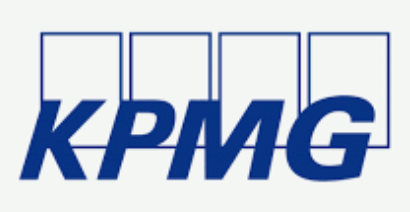M&A Advisory: An Overview
- Admin
- Aug 12, 2021
- 6 min read
Updated: Aug 13, 2021

As a financial advisor, M&A projects are among the most interesting and fulfilling in which to take part:
in a sell-side mandate, you get to work with many, if not all, of the client's departments and functions;
in a buy-side mandate, you get to work closely with the client's investment team, which is typically composed of highly qualified and professional individuals.
Both cases represent valuable learning opportunities, and offer unique access to your client's resources and know-how. Not to mention an army of other advisors.
That said, M&A engagements can also be extremely tiring and stressful, depending on the leadership and work styles of your boss and your client:
Some clients believe that the advisory fees they pay will justify you working 24/7 for them, even if inefficiently (for example, asking you to update a document's format 5 times).
Certain bosses want to show that the firm is fully dedicated to the client by making their team work overtime, even when unnecessary (like organizing or taking calls over the weekend for non-urgent matters).
If you are lucky enough to find a client and a boss who value quality, substance and efficiency over quantity, form and servilism, M&A projects give purpose and meaning to advisory work.
Let's have a look at how advisory firms assist their clients on M&A deals. We will make extensive use of common M&A terminology throughout: for further clarity on the technical terms that you will need to master as an M&A advisor, take a look at KPMG Belgium's book M&A jargon demystified (available at this link). We also attach the latest global M&A reports published by the leading financial advisors at the end of this article.
Why Pursue a Deal?
When organic growth and innovation are too costly or ineffective, companies can acquire or merge with other businesses that already have the required assets and capabilities (e.g. technology, intellectual property, staff, sources of finance, etc.) to achieve strategic goals, which may include:
increase revenue and market share,
broaden product/service offering,
enter new markets, and
benefit from synergies, economies of scale and scope.
Companies may also turn to M&A to achieve non-operational objectives, such as:
deleveraging or restructuring the asset base through the disposal of non-core or non-performing assets, and
become publicly traded on a regulated stock exchange without having to go through an IPO, by acquiring a listed target through a reverse takeover.
The ultimate objective of M&A transactions is to create wealth and value for shareholders, although HBR research shows that "70-90% of acquisitions are abysmal failures" (click here to read the full article). Advisors earn their fees regardless of the outcome.
The Lifecycle of a Transaction
In this section, we define "target" as any asset or operation that may be acquired by an investor or disposed by a seller, such as a company, a branch, a loan portfolio, etc. A typical end-to-end transaction, i.e. from deal origination to integration, can be broken down into the follows steps:
1. Setting a new direction, or reviewing the current corporate/portfolio strategy
The client's management determines or updates the growth strategy and investment priorities.
2. Market evaluation, screening and selecting targets
The client will hire an advisor to conduct a study of the market, and prepare a list of target companies. At times, it is actually the target that approaches a potential investor.
At this point, NDAs (non-disclosure agreements) are signed between the target and the long-list of potential buyers, after which the target sends them the teaser, i.e. a short document (generally no more than 5-10 slides) aimed at providing a brief overview of the target, often in an anonymous form.
The potential investors interested in pursuing the deal then sign an MoU (memorandum of understanding, also known as letter of intent, or LOI), after which the target sends them the IM (Information Memorandum), i.e. a detailed and comprehensive presentation of the target, and the process letter, which is a document that outlines the deal's schedule, with deadlines, contact information and other relevant organizational details.
3. Strategic due diligence
The potential investors perform an initial assessment of the target, including a preliminary valuation, based on the limited number of documents provided by the target.
4. Non-binding offers
The potential buyers submit a preliminary offer for the target, on the basis of the high-level due diligence conducted in step 3. Based on the offers received, the target will short-list the potential investors that are allowed to proceed to the next part of the process.
5. Full-scope due diligence
The potential buyers perform a financial, tax, legal, commercial and/or IT due diligence, based on ample access to the target's documents, staff and management. Simultaneously, they finalize the target's valuation and begin drafting the post-merger integration plan.
At this stage, a data room is set up (most commonly virtual, like Intralinks or Merrill Datasite), to which the target uploads the documents requested by the potential investors over a period of generally 3-6 weeks. In parallel, the Q&A process takes place: the potential buyers can ask a limited number of questions each day (uploadable to the virtual data room), to which the target provides answers (that are hopefully timely and useful). The management presentation, the first official meeting between target and potential investors, typically takes place a couple of weeks after the start of the due diligence activities.
6. Binding offers
The potential investors prepare a final offer for the target, based on the valuation exercise that also reflects any relevant findings resulting from the due diligence, as well as any synergies expected from deal completion.
7. Negotiation and pre-acquisition structuring
The target enters formal negotiations with the selected bidder, and together they define the deal structure, pricing and funding.
8. Closing and integration
The target and the investor conduct the final negotiations, obtain the final approval to close the transaction, and sign the SPA (share purchase agreement). The deal is announced to the market via press release, and the integration plan is implemented.
Where Do The Big 4s Come into Play?
In sell-side mandates, the financial advisor assists the seller in:
preparing the contact list of potential investors,
preparing the teaser, by gathering the data and information needed from the relevant departments and personnel,
preparing the information memorandum, by gathering the required data and information from the relevant departments and personnel,
conducting the vendor due diligence,
preparing financial projections and the business plan that will be presented to the potential investors,
preparing/reviewing the process letter,
setting up the data room, managing the Q&A process and coordinating the management presentation,
evaluating the offers (non-binding and/or binding) received from the potential investors, also by conducting the valuation of the target, and/or
negotiating with the selected bidder.
In buy-side mandates, the financial advisor assists the potential investor by:
preparing/reviewing the teaser, the information memorandum, the process letter, the SPA, and any other relevant document received from the target,
conducting the due diligence analysis, by reviewing the documentation uploaded by the seller on the virtual data room, uploading questions to the data room, and attending the management presentation,
conducting the target's valuation, also reflecting the due diligence findings,
writing up the due diligence and valuation reports,
structuring the offers (non-binding and/or binding),
preparing the post-integration business plan, and/or
negotiating with the selected bidder.
Depending on the scope of the exercise, the teams involved in conducting the above activities may include any and all of the following:
Corporate Finance (i.e. M&A and Valuations), in charge of preparing the relevant documentation (e.g. teaser and IM), managing the virtual data room and Q&A process, developing the business plan, valuing the target, and assisting in the negotiations with counterparts, among others.
Transaction Services, in charge of carrying out the financial due diligence, and assisting in the negotiations.
Restructuring, in charge of providing strategic advice and assisting with deal planning (e.g. carve-out, spin-off, liquidation, etc.), developing the business plan, and negotiating with counterparts (e.g. banks), among others.
Strategy, in charge of conducting the market study, as well as the commercial due diligence.
Tax, in charge of carrying out the tax due diligence.
Legal, in charge of conducting the legal due diligence.
IT, in charge of performing the IT due diligence.
M&A League Tables
The Big 4s love to tell their clients that they rank among the top 10 M&A financial advisors worldwide. And they do, if you consider deal count: Deloitte, PwC, KPMG and EY respectively ranked 2nd, 4th, 5th and 8th in the H1 2021 global advisory league table, according to Mergermarket (click here to view the full report).

Of course, if you consider deal value, the picture you get is quite different: as shown in the table below, all Big 4s fall somewhere below the top 20.

Other Useful Publications
Want to read more about current M&A trends? Here is our selection of the latest global M&A reports published by the leading financial advisors:
We hope you found this article useful. For questions or clarifications, feel free to reach out. Thanks for reading, and good luck!















